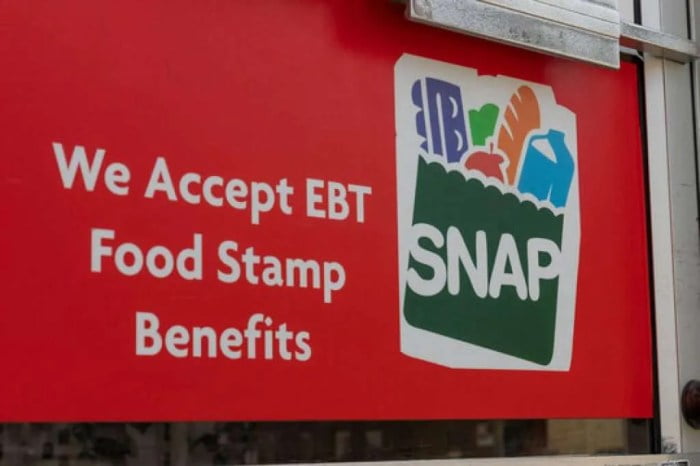Food insecurity is a prevalent concern for the homeless population, posing significant challenges to their well-being. The Supplemental Nutrition Assistance Program (SNAP), commonly known as food stamps, offers a lifeline to millions of low-income individuals and families, providing crucial financial assistance for purchasing groceries.
However, accessing food stamps can be particularly challenging for homeless individuals due to unique barriers they face.
This comprehensive guide explores the intricacies of food stamp eligibility and application for homeless individuals. We delve into the specific challenges they encounter, examine the additional requirements they may need to meet, and highlight the resources available to support them in navigating the process.
Additionally, we present case studies and success stories to illustrate the transformative impact food stamps can have on the lives of homeless individuals.
General Overview

Homelessness is a state of being without a stable and regular place to live. Food stamps, also known as the Supplemental Nutrition Assistance Program (SNAP), is a government-funded program that provides financial assistance to low-income individuals and families to purchase food.
To be eligible for food stamps, individuals must meet certain criteria, including income and asset limits. The application process typically involves completing an application form and providing proof of identity, income, and residency.
Eligibility Criteria
Eligibility for food stamps is based on several factors, including:
- Income: Individuals must have a gross income that is below a certain threshold. The income limit varies depending on household size and composition.
- Assets: Individuals must also have limited assets, such as cash, savings, and vehicles. The asset limit also varies depending on household size and composition.
- Work requirements: Able-bodied adults between the ages of 18 and 59 must meet certain work requirements to be eligible for food stamps. These requirements may include working a certain number of hours per week or participating in a workfare program.
Application Process
To apply for food stamps, individuals can either submit an application online or in person at their local social services office. The application process typically involves providing proof of identity, income, and residency.
- Proof of identity: This can include a driver’s license, state ID card, or birth certificate.
- Proof of income: This can include pay stubs, bank statements, or a letter from an employer.
- Proof of residency: This can include a utility bill, lease agreement, or mortgage statement.
Specific Considerations for Homeless Individuals

Homeless individuals face unique challenges in accessing food stamps, such as lack of stable housing, limited access to technology, and difficulty providing required documentation. They may also have additional requirements to meet, such as providing proof of residency or completing workfare programs.
Resources for Homeless Individuals
Several resources are available to help homeless individuals apply for food stamps, including:
- Local homeless shelters and service providers
- Food banks and pantries
- Social service agencies
- State and local government agencies
These organizations can provide assistance with completing applications, gathering necessary documentation, and connecting individuals with other support services.
Case Studies and Success Stories
Numerous homeless individuals have successfully obtained food stamps and improved their access to nutritious food. Their experiences offer valuable insights into the strategies and support systems that can help others achieve similar outcomes.
One notable example is Sarah, a single mother who became homeless after losing her job. With no stable income, she struggled to provide food for herself and her two young children. Through the assistance of a local homeless shelter, Sarah learned about food stamps and applied for them.
Collaboration and Partnerships
Sarah’s case highlights the importance of collaboration and partnerships between homeless shelters and social service agencies. The shelter staff provided Sarah with guidance on completing the food stamp application and connected her with other resources, such as job training and childcare assistance.
Outreach and Education
Another crucial factor in Sarah’s success was the outreach and education efforts of the homeless shelter. The staff regularly conducted workshops and provided information about food stamps and other available assistance programs.
Tips for Assisting Homeless Individuals
- Provide clear and accessible information about food stamps and other assistance programs.
- Offer assistance with completing applications and navigating the application process.
- Connect homeless individuals with support services that address their underlying needs, such as housing, healthcare, and employment.
- Collaborate with other agencies and organizations to provide a comprehensive network of support.
Policy and Advocacy
The policy landscape surrounding food stamps and homelessness is complex and multifaceted. Federal and state policies interact to create a patchwork of eligibility requirements and benefit levels. This can make it difficult for homeless individuals to access the food assistance they need.
One area where policy changes could improve access for homeless individuals is in the area of categorical eligibility. Categorical eligibility allows individuals who receive certain types of public assistance, such as Supplemental Security Income (SSI) or Temporary Assistance for Needy Families (TANF), to automatically qualify for food stamps.
Expanding categorical eligibility to include more homeless individuals would make it easier for them to get the food assistance they need.
Advocacy Efforts
Advocacy efforts are also important to address the needs of homeless individuals in the food stamp program. Advocates can work to raise awareness of the issue, push for policy changes, and provide support to homeless individuals who are trying to access food stamps.
Future Directions and Innovations
Enhancing food stamp accessibility for homeless individuals demands continuous exploration of cutting-edge technologies and innovative strategies. These advancements can streamline processes, improve efficiency, and cater to the unique needs of this vulnerable population.
Partnerships and collaboration among various stakeholders, including government agencies, non-profit organizations, and technology providers, are crucial to address this issue effectively. By leveraging collective expertise and resources, comprehensive solutions can be developed and implemented.
Emerging Technologies
- Mobile Applications: Smartphone apps can simplify the application process, provide real-time updates, and facilitate communication between individuals and caseworkers.
- Biometric Identification: Biometric technologies can enhance security and reduce fraud by verifying identities without the need for traditional identification documents.
- Blockchain: Blockchain-based systems can create secure and transparent records, ensuring the integrity of data and reducing the risk of errors or tampering.
Partnerships and Collaboration
Effective partnerships between government agencies, non-profit organizations, and technology providers are essential to address the challenges faced by homeless individuals in accessing food stamps.
- Government Agencies: Government agencies can provide funding, establish policies, and collaborate with other stakeholders to ensure program effectiveness.
- Non-Profit Organizations: Non-profit organizations can provide direct services to homeless individuals, including assistance with food stamp applications and case management.
- Technology Providers: Technology providers can develop and implement innovative solutions that streamline processes and improve accessibility.
Future Research and Policy Development
Ongoing research and policy development are essential to inform and guide future efforts to improve food stamp access for homeless individuals.
- Research: Research can identify barriers to food stamp access, evaluate the effectiveness of interventions, and inform policy development.
- Policy Development: Policymakers can develop and implement policies that address the unique needs of homeless individuals, such as simplified application processes and increased outreach efforts.
Closure

Ensuring equitable access to food stamps for homeless individuals requires a multifaceted approach involving policy changes, advocacy efforts, and innovative solutions. By addressing the unique barriers they face and implementing targeted support systems, we can empower them to access this vital resource.
This not only alleviates food insecurity but also contributes to their overall well-being and stability, ultimately fostering a more just and equitable society.
FAQ
Can homeless individuals apply for food stamps?
Yes, homeless individuals are eligible to apply for food stamps, regardless of their housing status.
What additional requirements may homeless individuals need to meet?
Homeless individuals may need to provide proof of identity, residency, and income, which can be challenging to obtain without a fixed address. They may also need to participate in workfare programs or job training.
What resources are available to help homeless individuals apply for food stamps?
Various organizations, such as homeless shelters, food banks, and social service agencies, provide assistance with food stamp applications, including document gathering and interview preparation.